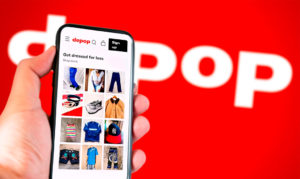Whiplash Team, 14 November 2025
Memes, reels and pop culture: the new language of branding
The codes of communication have changed. Brands must learn to inhabit the languages of the internet: memes, reels, pop culture references and ephemeral formats that shape the cultural agenda of millions every day.
The meme, more than just a visual joke, has become a way of narrating collective reality. Several researchers have described it as a “cultural vehicle” that conveys ideas and emotions quickly and recognisably. Limor Shifman, professor at the Hebrew University of Jerusalem, argues in her book Memes in Digital Culture that memes function as cultural units which replicate, adapt and transform, creating cohesion among those who share them.
Brands that use memes are not doing so simply “to be funny”, but to demonstrate that they understand the codes of digital conversation. Netflix, for example, has turned its social accounts into genuine meme factories, where snippets from its series are transformed into social commentary that travels far beyond the platform itself.
Reels and the rise of short-form content
The rise of TikTok and Instagram’s response with reels have set a new standard for audiovisual consumption: fast, brief and highly creative. A HubSpot report notes that 73% of consumers prefer short videos when researching products or services.
This format is not only more accessible for users, but also allows brands to experiment with agile narratives, drawing on musical or choreographic trends that enhance virality. In this space, technical perfection matters less than authenticity and the ability to create closeness.
Pop culture as shared territory
Series, songs, video games and viral phenomena now function as meeting points across diverse audiences. Brands that incorporate pop culture references are not merely being opportunistic: these universes form part of the collective imagination of their consumers.
One striking example is Burger King’s Spanish campaign parodying the iconic trailer of La Casa de Papel to launch a promotion. By appropriating a cultural symbol at its peak, the brand increased awareness and engagement with younger audiences, blending humour and complicity without losing its distinctive tone.
The challenge of relevance without pretence
While memes, reels and cultural references are powerful tools, they also carry risks—chief among them a lack of authenticity. When a brand forces a language that does not belong to it, the reaction is often rejection or indifference.
Success depends on three factors: coherence with brand identity, the ability to adapt to digital codes, and speed in joining real-time conversations. As Jonah Berger, professor of marketing at Wharton, observes: “Ideas spread when they feel natural within the cultural context in which they appear.”
In this sense, the key is not to produce memes or reels for the sake of it, but to find ways of bringing value and entertainment to digital communities while respecting their internal logic.
A language in constant evolution
Branding is no longer confined to visual identity manuals or carefully staged campaigns. Today, much of a brand’s relevance plays out in spaces where language is fluid, shifting and collective. Recognising that memes, reels and pop culture are arenas of meaning-making is to accept that brands must learn to converse rather than monologue.
That conversation requires humility, speed and, above all, authenticity. Only then can brands inhabit these new languages without losing credibility, turning digital culture into a strategic ally rather than a foreign territory.




